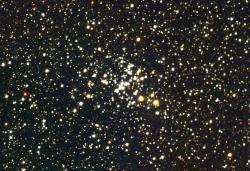 Monday, March 19 – Heads up for viewers in Alaska and Asia! There will be a partial solar eclipse visible in your area on this universal date. Be sure to check www.mreclipse.com for information in your area. It’s great fun to watch the Moon take a “bite” out of the Sun!
Monday, March 19 – Heads up for viewers in Alaska and Asia! There will be a partial solar eclipse visible in your area on this universal date. Be sure to check www.mreclipse.com for information in your area. It’s great fun to watch the Moon take a “bite” out of the Sun!
Continue reading “What’s Up this Week: March 19 – March 25, 2007”
CryoSat Version 2
 The loss of CryoSat was a sad day for Earth observation. It was destroyed in October 2005 when an onboard flight-control system failed on a Russian Rockot launch vehicle. But engineers kept their plans, and the development of CryoSat version 2 is well underway. This replacement spacecraft is scheduled for launch in 2009, and will measure the thickness of land and sea ice to determine how quickly it’s melting away.
The loss of CryoSat was a sad day for Earth observation. It was destroyed in October 2005 when an onboard flight-control system failed on a Russian Rockot launch vehicle. But engineers kept their plans, and the development of CryoSat version 2 is well underway. This replacement spacecraft is scheduled for launch in 2009, and will measure the thickness of land and sea ice to determine how quickly it’s melting away.
Continue reading “CryoSat Version 2”
A Very Long Lasting Gamma Ray Burst
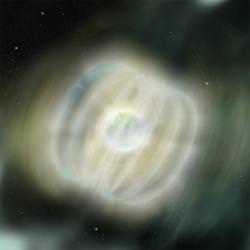 Gamma ray bursts are some of the most energetic events in the Universe. Even more amazing is just how quickly it all unfolds. One moment, everything’s quiet. A moment later, there’s a tremendous explosion that we can see from billions of light years away. And just seconds later, it’s gone again – the afterglow will be around for a few days, but that’s it. Astronomers and spacecraft have only a few seconds to a few minutes to find the explosion and study it before it fades away.
Gamma ray bursts are some of the most energetic events in the Universe. Even more amazing is just how quickly it all unfolds. One moment, everything’s quiet. A moment later, there’s a tremendous explosion that we can see from billions of light years away. And just seconds later, it’s gone again – the afterglow will be around for a few days, but that’s it. Astronomers and spacecraft have only a few seconds to a few minutes to find the explosion and study it before it fades away.
Continue reading “A Very Long Lasting Gamma Ray Burst”
Asteroid Sample Return Mission Proposed
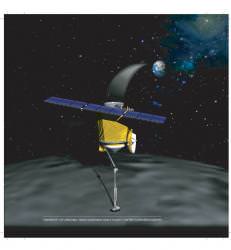 A new NASA mission is being proposed to fly out, extract a sample from a nearby asteroid, and return it to Earth. The asteroid is known as 1999 RQ36, and the mission is OSIRIS.
A new NASA mission is being proposed to fly out, extract a sample from a nearby asteroid, and return it to Earth. The asteroid is known as 1999 RQ36, and the mission is OSIRIS.
Continue reading “Asteroid Sample Return Mission Proposed”
Seas Discovered on Titan
 Planetary scientists had reported lakes around Titan’s southern poles, but now it looks like the northern hemisphere has liquid on the surface as well. Of course, we’re not talking about water, that would be frozen solid. These are seas filled with liquid methane or ethane.
Planetary scientists had reported lakes around Titan’s southern poles, but now it looks like the northern hemisphere has liquid on the surface as well. Of course, we’re not talking about water, that would be frozen solid. These are seas filled with liquid methane or ethane.
Continue reading “Seas Discovered on Titan”
Photo Contains More Than 1,000 Supermassive Black Holes
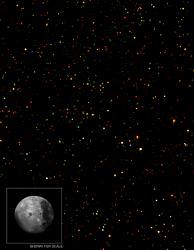 Each of the multicoloured dots in this photograph is a black hole. The panorama was created using images taken by NASA’s Chandra X-Ray Observatory, the Spitzer Space Telescope, and several ground-based telescopes. The scale image of the moon should give you an idea of how large a portion of the sky was imaged.
Each of the multicoloured dots in this photograph is a black hole. The panorama was created using images taken by NASA’s Chandra X-Ray Observatory, the Spitzer Space Telescope, and several ground-based telescopes. The scale image of the moon should give you an idea of how large a portion of the sky was imaged.
Continue reading “Photo Contains More Than 1,000 Supermassive Black Holes”
Radioactive Core Might Explain Geysers on Enceladus
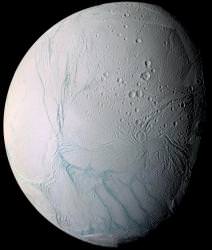 Since Cassini arrived at Saturn, it has made many impressive discoveries. One of the most intriguing is the discovery that Saturn’s icy moon Enceladus has geysers spewing water ice into space. Some planetary scientists theorize that there are pockets of liquid water near the surface of Enceladus that could harbour life. But where is the heat coming from to fuel these geysers?
Since Cassini arrived at Saturn, it has made many impressive discoveries. One of the most intriguing is the discovery that Saturn’s icy moon Enceladus has geysers spewing water ice into space. Some planetary scientists theorize that there are pockets of liquid water near the surface of Enceladus that could harbour life. But where is the heat coming from to fuel these geysers?
Continue reading “Radioactive Core Might Explain Geysers on Enceladus”
New Globular Cluster Discovered
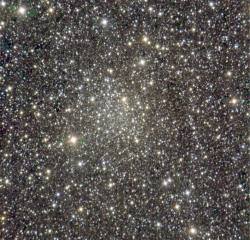 Globular star clusters are gigantic collections of stars formed at the same time, and held together by their mutual gravity. Amazingly, they’re some of the oldest objects in the Universe – some are more than 10 billion years old. More than 150 globular clusters have been discovered in the Milky Way by astronomers. And now you can add one more to that list.
Globular star clusters are gigantic collections of stars formed at the same time, and held together by their mutual gravity. Amazingly, they’re some of the oldest objects in the Universe – some are more than 10 billion years old. More than 150 globular clusters have been discovered in the Milky Way by astronomers. And now you can add one more to that list.
Continue reading “New Globular Cluster Discovered”
Podcast: The Third Question Show
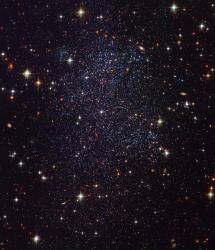 The questions are piling up, so it’s time to get through them. We’ve got a great collection this week. How can our eyes collect so many photons? What’s the speed of gravity? Shouldn’t the light from the cosmic microwave background radiation have passed us by?
The questions are piling up, so it’s time to get through them. We’ve got a great collection this week. How can our eyes collect so many photons? What’s the speed of gravity? Shouldn’t the light from the cosmic microwave background radiation have passed us by?
Continue reading “Podcast: The Third Question Show”
What’s Up this Week: March 12 – March 18, 2007
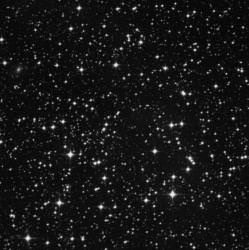 Monday, March 12 – Tonight let’s return again to NGC 2362 and start at the cluster’s north-northeast corner to have a look at a single, unusual star – UW Canis Majoris. At magnitude 4.9, this super-giant spectroscopic binary is one of the most massive and luminous in our galaxy. Its two stars are separated by only 27 million kilometers (17 million miles_ and revolve around each other at a frenzied pace – in less than four and a half days. This speed means the stars themselves are flattened and would appear to be almost egg-shaped. The primary itself is shedding material that’s being collected by the secondary star.
Monday, March 12 – Tonight let’s return again to NGC 2362 and start at the cluster’s north-northeast corner to have a look at a single, unusual star – UW Canis Majoris. At magnitude 4.9, this super-giant spectroscopic binary is one of the most massive and luminous in our galaxy. Its two stars are separated by only 27 million kilometers (17 million miles_ and revolve around each other at a frenzied pace – in less than four and a half days. This speed means the stars themselves are flattened and would appear to be almost egg-shaped. The primary itself is shedding material that’s being collected by the secondary star.
Continue reading “What’s Up this Week: March 12 – March 18, 2007”
